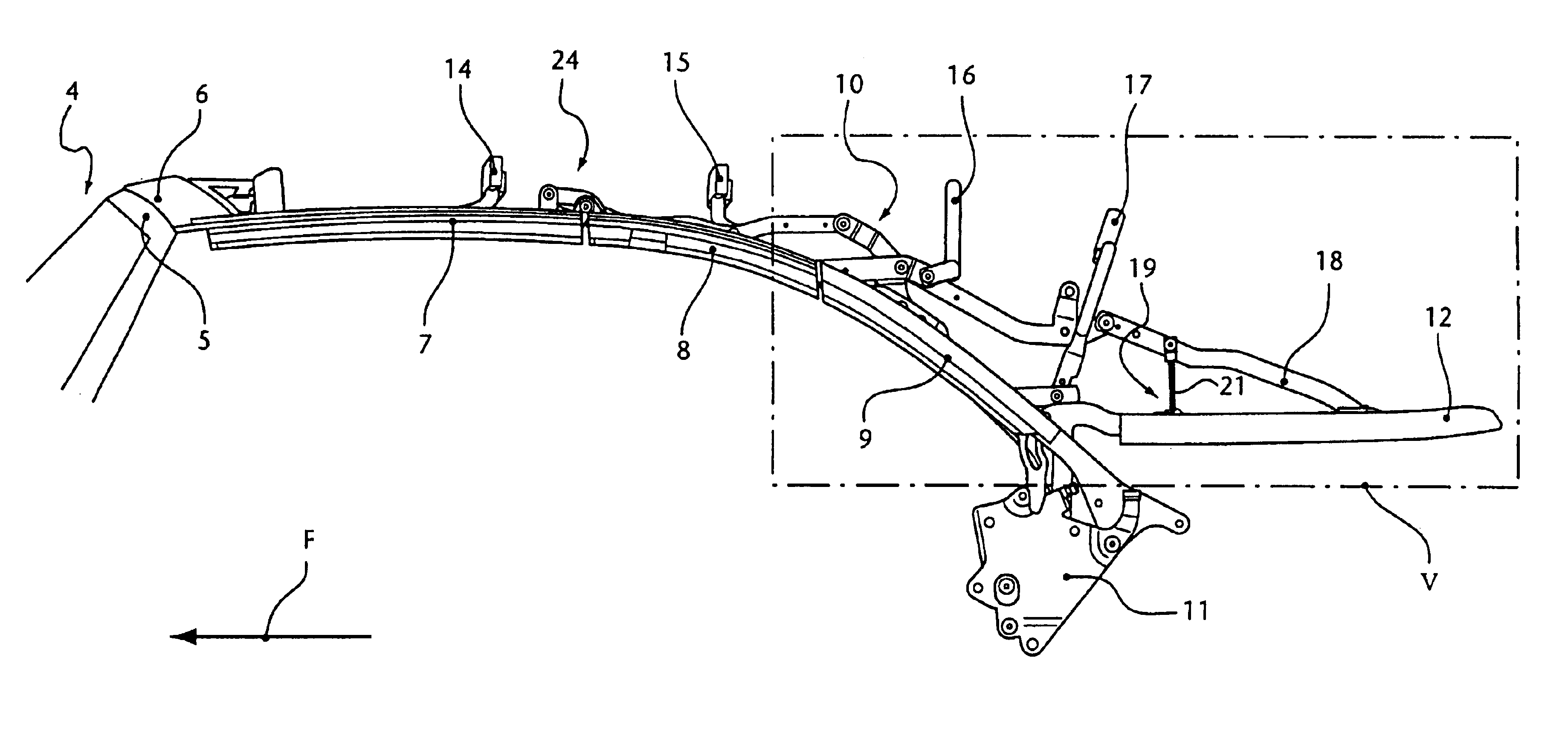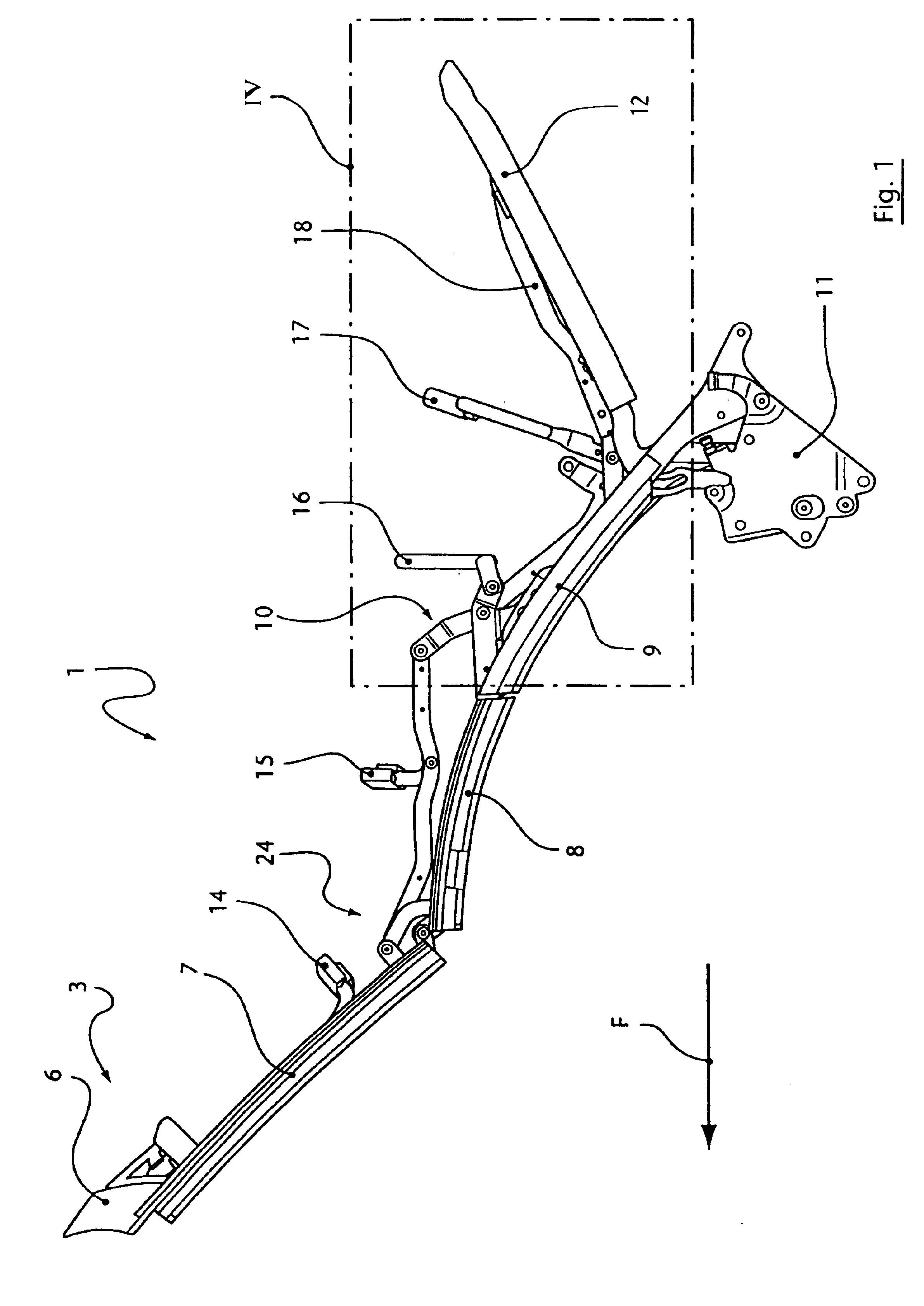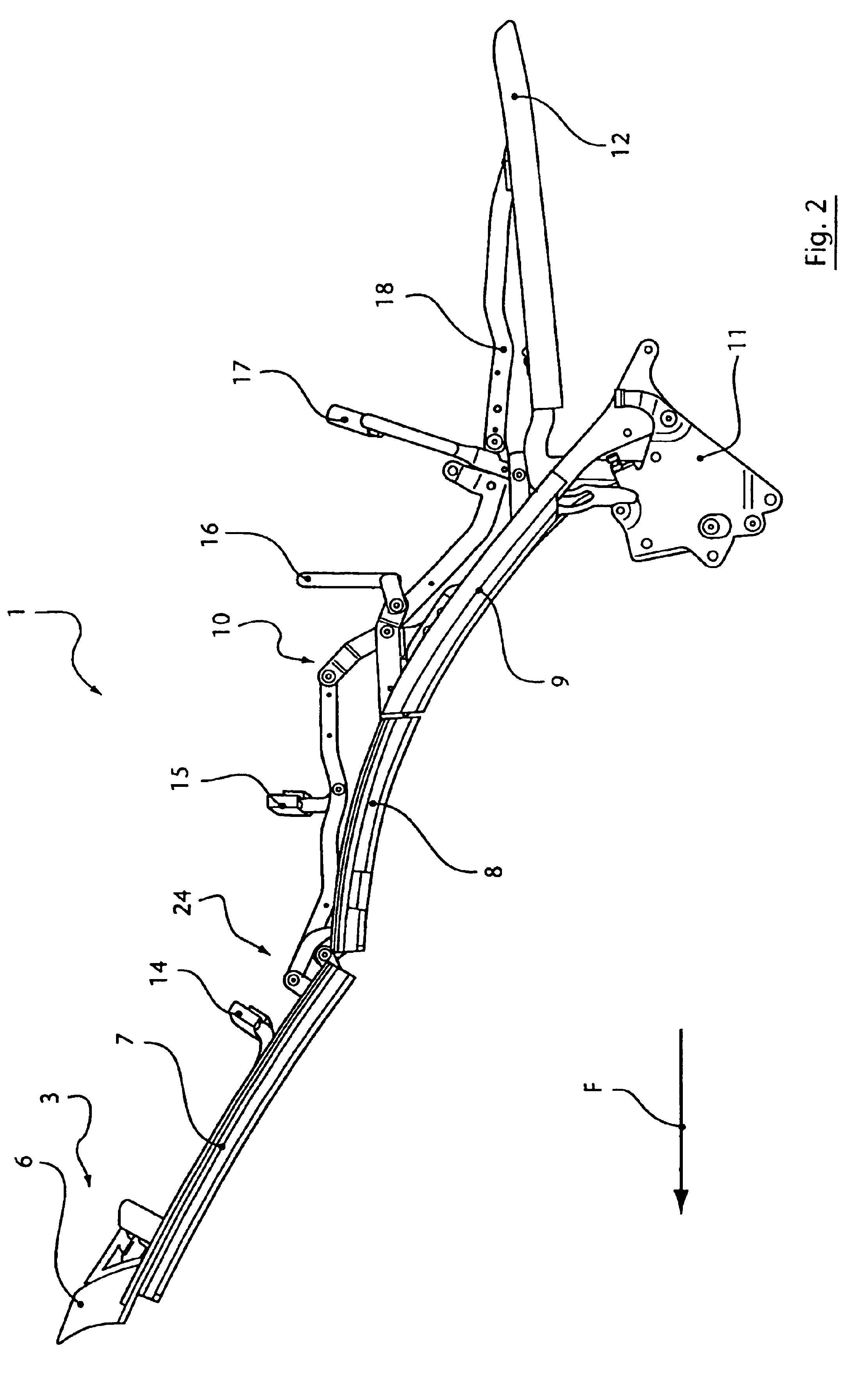[0006]It is, therefore, one object of the present invention to provide improved foldable convertible tops (also known in the art as “roof assemblies” and “bonnets”) suitable for use in convertible vehicles, and methods for making and using the same. In particularly preferred aspects of the present teachings, the convertible vehicle tops may be optimized so as to provide appropriate dampening of front portion movement when the top is being closed.
[0007]Thus, in one aspect of the present teachings, at least one dampening device is provided within the convertible top in order to restrain or provide
mechanical resistance to a downwardly directed component of the movement of the convertible top during the final phase of a top closing operation. In other words, the dampening device, which optionally may comprise a
shock absorber, will slow downwardly directed movement of a
leading edge portion of the convertible top as the
leading edge portion moves towards a vehicle windshield frame. As a result, the front portion of the convertible top will not abruptly contact (i.e., slam against) the windshield frame when the convertible top is closed.
[0010]By placing the dampening device at or within the rear portion of the convertible top, it not necessary to put such a space-consuming device within the front portion of the convertible top. Consequently, foldable convertible tops according to the present teachings do not limit or
restrict the amount of headroom above the driver's and passenger's seats of the vehicle. Furthermore, the weight of the front portion of the convertible top may be reduced, as compared to the above-noted known art, thereby further helping to reduce the speed at which the front portion of the convertible top will move towards the windshield frame during the final phase of the convertible top closing operation for convertible tops having a
top dead center point defined between the fully open position and the fully closed position.
[0011]In one representative advantageous application of the present teachings, the dampening device may be operably coupled between a dead center point linkage and a rear tensioning bow within the convertible top. In this case, movement of dead center point linkage relative to the rear tensioning bow can be suitably restrained. As a result, it is possible to prevent sudden movement of the dead center point linkage beyond the
top dead center point, which sudden movement is due to the effect of gravity on the front portion of the convertible top after passing the
top dead center point. Thus, this feature of the present teachings further prevents the front portion of the convertible top from slamming against the windshield frame when the convertible top is closed. However, it is explicitly noted that the present teachings are also applicable to convertible tops that do not have a top dead center point defined between the fully open position and the fully closed position.
[0013]In another aspect of the present teachings, the dampening device may comprise a
shock absorber filled with oil. Further, the oil-filled shock absorber preferably may be disposed in parallel with, and fixedly coupled to, a portion of the rear tensioning bow. In addition, one portion of the dead center point linkage may be pivotably coupled to the tensioning bow, such that the connected portion of the dead center point linkage is disposed substantially in parallel with the tensioning bow when the convertible top is folded and stowed in a vehicle open position. Thus, when the convertible top is closed, the angle defined between the tensioning bow and the pivotably coupled portion of the dead center point linkage will increase. The dampening device preferably provides
mechanical resistance to reduce the opening speed of this angle during the final phase of the convertible top closing operation.
[0014]The shock absorber may preferably include an extendable and retractable
piston. The shock absorber may either provide resistance only when extending or when both extending and retracting. In either case, a first end of a traction member, such as a resiliently elastic cable, may be coupled to the
piston of the shock absorber and extend through a direction-changing element, such as, but not limited to, a loop, an eyelet or a hook. A second end of the traction member may be coupled to the portion of the dead center point linkage that forms an increasing angle with the tensioning bow as the convertible top is unfolded towards the vehicle closed position. In this representative case, the shock absorbing effect (
mechanical resistance) can be transmitted or transferred to the dead center point linkage via the direction-changing element in a direction substantially perpendicular to the shock absorber for at least a portion of the closing movement of the vehicle top. Because the dead center point linkage is operably coupled to the front portion of the convertible top, the shock absorbing effect (mechanical resistance) can be effectively applied to the dead center point linkage, thereby restraining or slowing the downward portion of the movement of the front portion of the convertible top.
 Login to View More
Login to View More  Login to View More
Login to View More 


